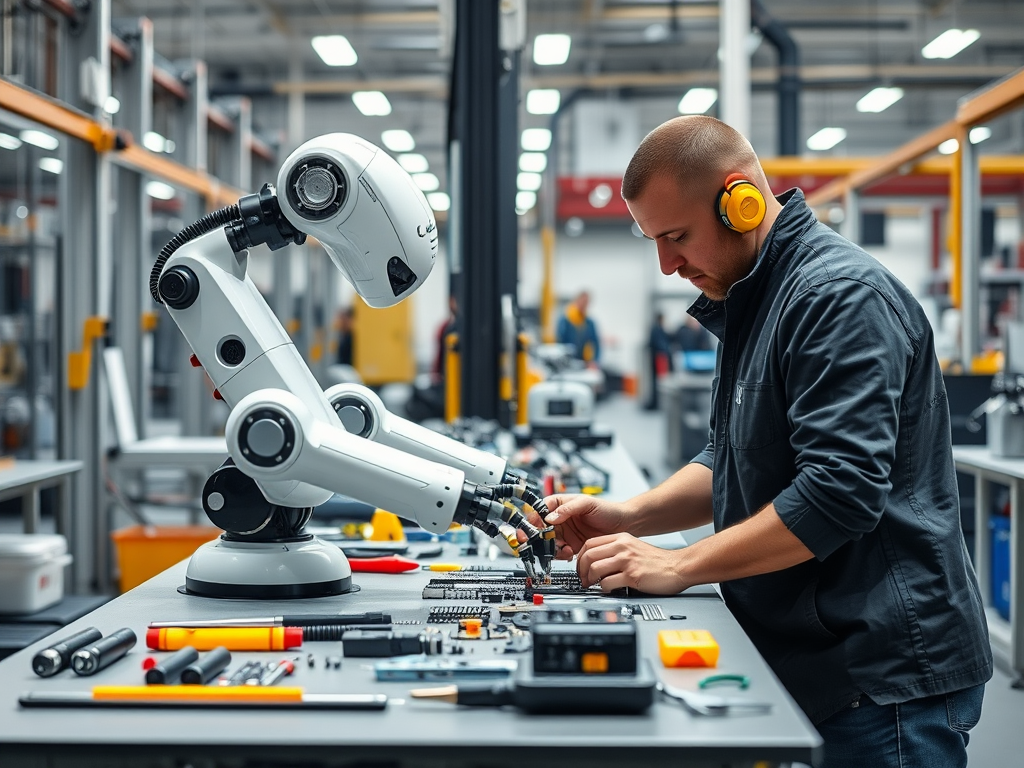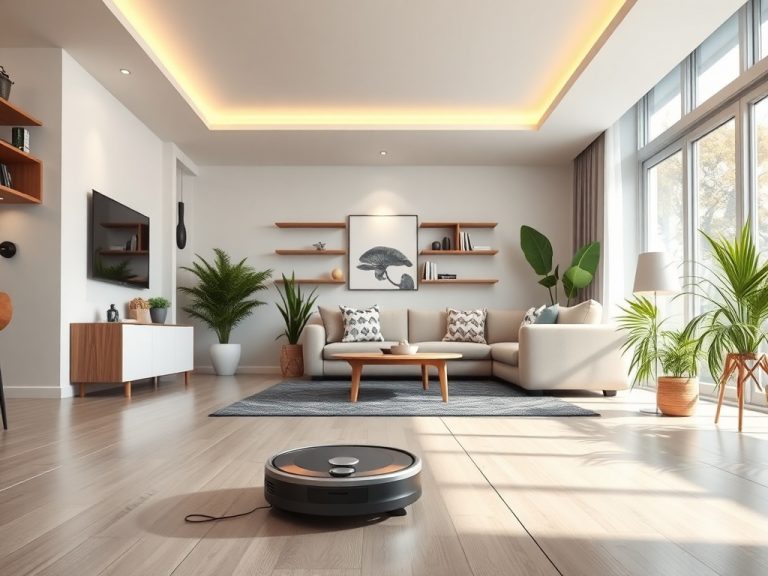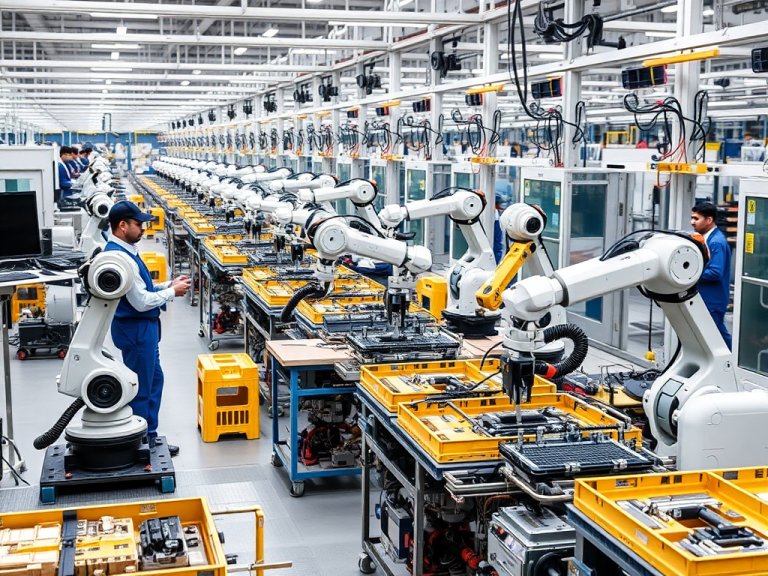
Introduction
The integration of robots into the workforce in recent years has transformed various industries. Among these advancements, collaborative robots, or cobots, have emerged as a significant innovation. Unlike traditional industrial robots, which operate in isolation, cobots are designed to work alongside humans, enhancing productivity and efficiency while ensuring safety. This article explores the evolution, features, applications, benefits, challenges, and future prospects of cobots.
What are Cobots?
Cobots are robotic systems specifically engineered to interact safely and effectively with human workers. They are equipped with advanced sensors, machine learning capabilities, and intuitive interfaces, allowing them to perform tasks that complement human capabilities. Unlike their industrial counterparts, which often require safety cages and extensive programming, cobots are user-friendly and adaptable.
The Evolution of Cobots
The concept of cobots originated in the late 1990s, driven by the need for more flexible automation solutions. Initial designs focused on safety and ease of use, paving the way for today’s sophisticated cobots. Over the years, advancements in artificial intelligence, sensor technology, and robotics have contributed to the significant improvements in their capabilities.
Key Features of Cobots
- Safety: Cobots are designed with safety as a priority. They often feature force-limiting technology that allows them to detect human presence and adjust their movements accordingly, minimizing the risk of injury. This safety feature distinguishes them from traditional industrial robots, which can pose a danger to human workers.
- Ease of Use: Most cobots come with simple programming interfaces or even teach-and-replay capabilities, allowing users to train them easily without extensive programming knowledge. This user-friendliness makes cobots accessible to small and medium-sized enterprises (SMEs), not just large manufacturers.
- Flexibility: Cobots can be deployed in various tasks across multiple sectors, from assembly lines to agriculture, making them versatile tools in the modern workplace. Their ability to adapt to different tasks and environments is one of their most significant advantages.
- Collaboration: They are designed to assist human workers rather than replace them, taking on repetitive or physically demanding tasks and allowing humans to focus on more complex activities. This collaboration fosters a more efficient and harmonious work environment.
- Connectivity: Many cobots are equipped with connectivity features that allow them to integrate with other systems and devices, enabling real-time data sharing and process optimization.
Applications of Cobots
Manufacturing
In manufacturing, cobots are utilized for tasks such as assembly, welding, and quality inspection. They work alongside human operators, enhancing speed and accuracy while reducing the strain on workers. For instance, in automotive assembly lines, cobots can perform repetitive tasks such as screwing and tightening components, freeing up skilled workers to focus on more complex assembly tasks.
Healthcare
In the healthcare sector, cobots assist in tasks like medication dispensing, patient monitoring, and surgical assistance. Their precision and reliability can significantly improve patient care and operational efficiency. For example, surgical robots can assist surgeons by providing enhanced dexterity and precision during operations, while cobots in pharmacies can help manage inventory and dispense medications accurately.
Logistics
Cobots are increasingly employed in logistics and warehousing, helping to automate the movement of goods. They can transport items, assist with inventory management, and streamline order fulfillment processes. Companies like Amazon use cobots to navigate warehouses, moving products from storage to packing areas, thereby reducing delivery times.
Agriculture
In agriculture, cobots help with tasks such as planting, harvesting, and monitoring crops. Their ability to operate in various conditions makes them valuable assets in modern farming practices. For instance, robotic harvesters can work alongside human workers to pick fruits and vegetables, increasing efficiency and reducing labor costs.
Retail
Cobots are also making their way into retail environments, where they can assist with inventory management, shelf stocking, and customer service. For example, autonomous robots can navigate store aisles, restocking shelves or providing information to customers, enhancing the overall shopping experience.
Benefits of Cobots
- Increased Productivity: Cobots can work continuously without fatigue, significantly increasing output and efficiency in various processes. This constant productivity helps businesses meet rising customer demands without compromising quality.
- Cost-Effectiveness: By automating repetitive tasks, businesses can reduce labor costs and improve their return on investment. Cobots require less capital investment compared to traditional industrial robots, making them a viable option for many companies.
- Enhanced Worker Satisfaction: With cobots taking over mundane tasks, human workers can engage in more fulfilling and intellectually stimulating work, leading to higher job satisfaction. This shift can help reduce employee turnover and improve morale.
- Scalability: Cobots can be easily reprogrammed and redeployed for different tasks, allowing businesses to adapt quickly to changing needs. This scalability is crucial in today’s fast-paced market where flexibility is essential.
- Improved Quality Control: Cobots can perform tasks with high precision, reducing the likelihood of errors. This accuracy can lead to higher product quality and consistency, which is vital for maintaining customer satisfaction.
Challenges and Considerations
Despite their advantages, the implementation of cobots is not without challenges. Companies must consider:
- Integration with Existing Systems: Ensuring that cobots can work seamlessly with current workflows and technologies is critical. Companies may need to invest in infrastructure upgrades to facilitate integration.
- Training and Adoption: Providing adequate training for employees to work alongside cobots effectively is essential. A successful implementation requires a cultural shift within the organization, emphasizing collaboration between humans and machines.
- Maintenance and Support: Establishing a plan for ongoing maintenance and technical support is vital for ensuring cobots operate efficiently over time. Companies should consider the total cost of ownership, including maintenance and potential downtime.
- Ethical Considerations: As cobots become more prevalent, ethical considerations regarding job displacement and the role of automation in the workforce will continue to be debated. Companies must navigate these discussions thoughtfully.
The Future of Cobots
The future of cobots looks promising as technological advancements continue to evolve. Key trends shaping the future include:
- Enhanced AI Capabilities: As artificial intelligence improves, cobots will become more intelligent and capable of handling complex tasks, further enhancing their utility in various sectors.
- Improved Human-Robot Interaction: Future cobots may feature advanced communication capabilities, allowing for even more intuitive collaboration between humans and machines.
- Wider Adoption Across Industries: As awareness of cobots grows, more industries will likely adopt these technologies, leading to increased demand and innovation.
- Customization and Personalization: The ability to tailor cobots to specific tasks or environments will become more prevalent, allowing businesses to optimize their operations precisely.
Conclusion
Collaborative robots represent a significant leap forward in the field of automation and robotics. By working alongside humans, they enhance productivity, improve safety, and create a more dynamic work environment. As technology continues to evolve, the role of cobots in various industries will likely expand, paving the way for a future where humans and robots collaborate more closely than ever before. Embracing this change can lead to innovative solutions and a more efficient workforce, ultimately benefiting both businesses and employees. The journey of cobots has just begun, and their potential to revolutionize work processes is immense.






